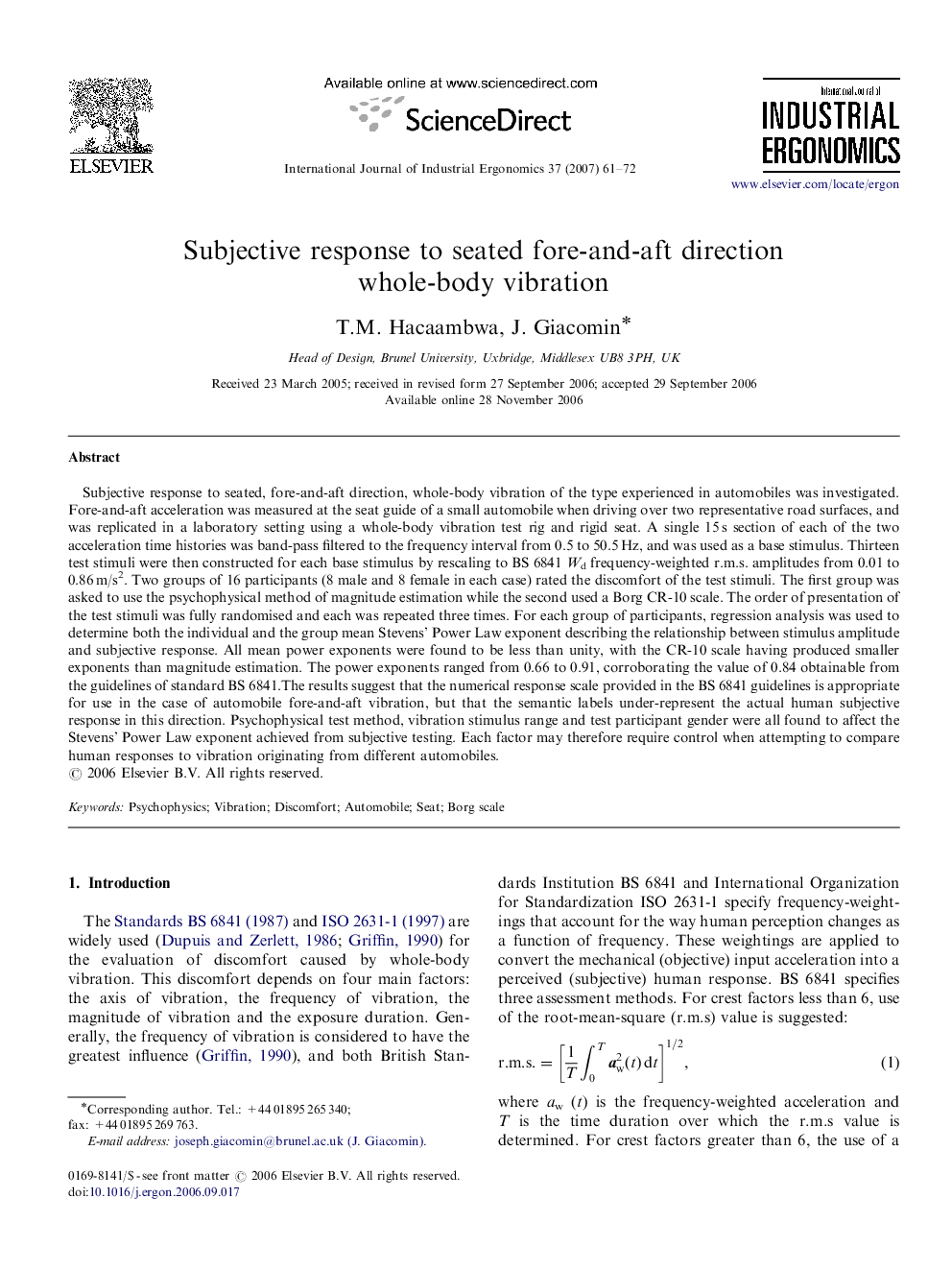| Article ID | Journal | Published Year | Pages | File Type |
|---|---|---|---|---|
| 1097007 | International Journal of Industrial Ergonomics | 2007 | 12 Pages |
Subjective response to seated, fore-and-aft direction, whole-body vibration of the type experienced in automobiles was investigated. Fore-and-aft acceleration was measured at the seat guide of a small automobile when driving over two representative road surfaces, and was replicated in a laboratory setting using a whole-body vibration test rig and rigid seat. A single 15 s section of each of the two acceleration time histories was band-pass filtered to the frequency interval from 0.5 to 50.5 Hz, and was used as a base stimulus. Thirteen test stimuli were then constructed for each base stimulus by rescaling to BS 6841 Wd frequency-weighted r.m.s. amplitudes from 0.01 to 0.86 m/s2. Two groups of 16 participants (8 male and 8 female in each case) rated the discomfort of the test stimuli. The first group was asked to use the psychophysical method of magnitude estimation while the second used a Borg CR-10 scale. The order of presentation of the test stimuli was fully randomised and each was repeated three times. For each group of participants, regression analysis was used to determine both the individual and the group mean Stevens’ Power Law exponent describing the relationship between stimulus amplitude and subjective response. All mean power exponents were found to be less than unity, with the CR-10 scale having produced smaller exponents than magnitude estimation. The power exponents ranged from 0.66 to 0.91, corroborating the value of 0.84 obtainable from the guidelines of standard BS 6841.The results suggest that the numerical response scale provided in the BS 6841 guidelines is appropriate for use in the case of automobile fore-and-aft vibration, but that the semantic labels under-represent the actual human subjective response in this direction. Psychophysical test method, vibration stimulus range and test participant gender were all found to affect the Stevens’ Power Law exponent achieved from subjective testing. Each factor may therefore require control when attempting to compare human responses to vibration originating from different automobiles.
